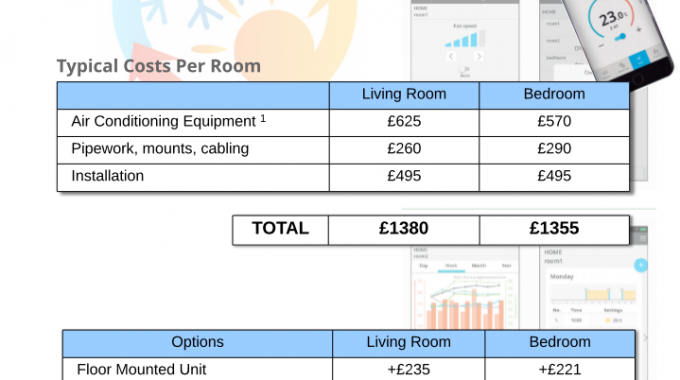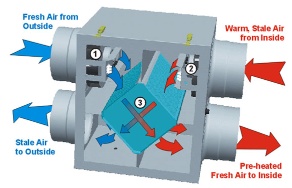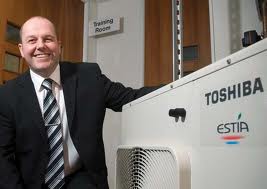Heat pumps are now an incorporated into many air conditioning units making them one of the most efficient ways of heating and cooling a building. Simply put, a heat pump is a device that uses a small amount of energy to move heat from one location to another. An air source heat pump absorbs heat from outside and transfers it to the inside of a building (or the other way around when cooling is required). They work extremely efficiently, as they simply transfer heat, rather than burn fuel to create it.
The most common type of heat pump is an “air to air heat pump”, but more commonly known as an air-air heat pump, because it takes heat from outdoor air and transfers it to indoor air ducts. With the right kind of modifications, air-source heat pumps can also work with other types of indoor heating systems. The great thing about heat pumps is that they can be reversed, so instead of extracting heat from the outside, they extract it from the inside, thus providing cooling – just as an air conditioner does.
The benefits of air source heat pumps
Major technology improvements in air source heat pumps has driving down prices and drive up the potential energy savings. According to the Energy Saving Trust, air source heat pumps are more cost effective at producing heat than electric, oil and solid fuels. On top of that, they have lower carbon emissions, require very little maintenance and are relatively easy to install.
How do air source heat pumps work?
In a typical heat pump cycle, heat is extracted from the heat source by the evaporator, which is at a low temperature. In it, the heat is transferred to a working fluid, changing it from liquid to gas. A compressor then increases the gas pressure, causing the temperature to rise. The hot gas flows to the condenser, where heat is given off as the working fluid changes back from gas to liquid. The working fluid, which is still at a high pressure, is then passed through an expansion valve, which lowers the pressure. In doing so, the fluid becomes cold and returns to its liquid state before once again entering the evaporator.
In refrigeration and air-conditioning applications, the process is reversed, supplying useful cooling instead.
How is Heat Pump Performance measured?
Two ratios are used to evaluate the performance of an heat pump. The simplest one is the COP (coefficient of performance), the ration between the released heat and the energy input of the running device.
A more complex one is the SPF (seasonal performance factor), which, firstly refers to the performance over an entire season, and secondly incorporates the complete system including collectors, pumps and auxiliary heaters if it is the case.
COP or SPF increase as the temperature difference decreases between the heat source and the heated destination. They can be optimized by choosing a heating system requiring only a low final water temperature (e.g. underfloor heating), and by choosing a heat source with a high average temperature (e.g. the ground).








